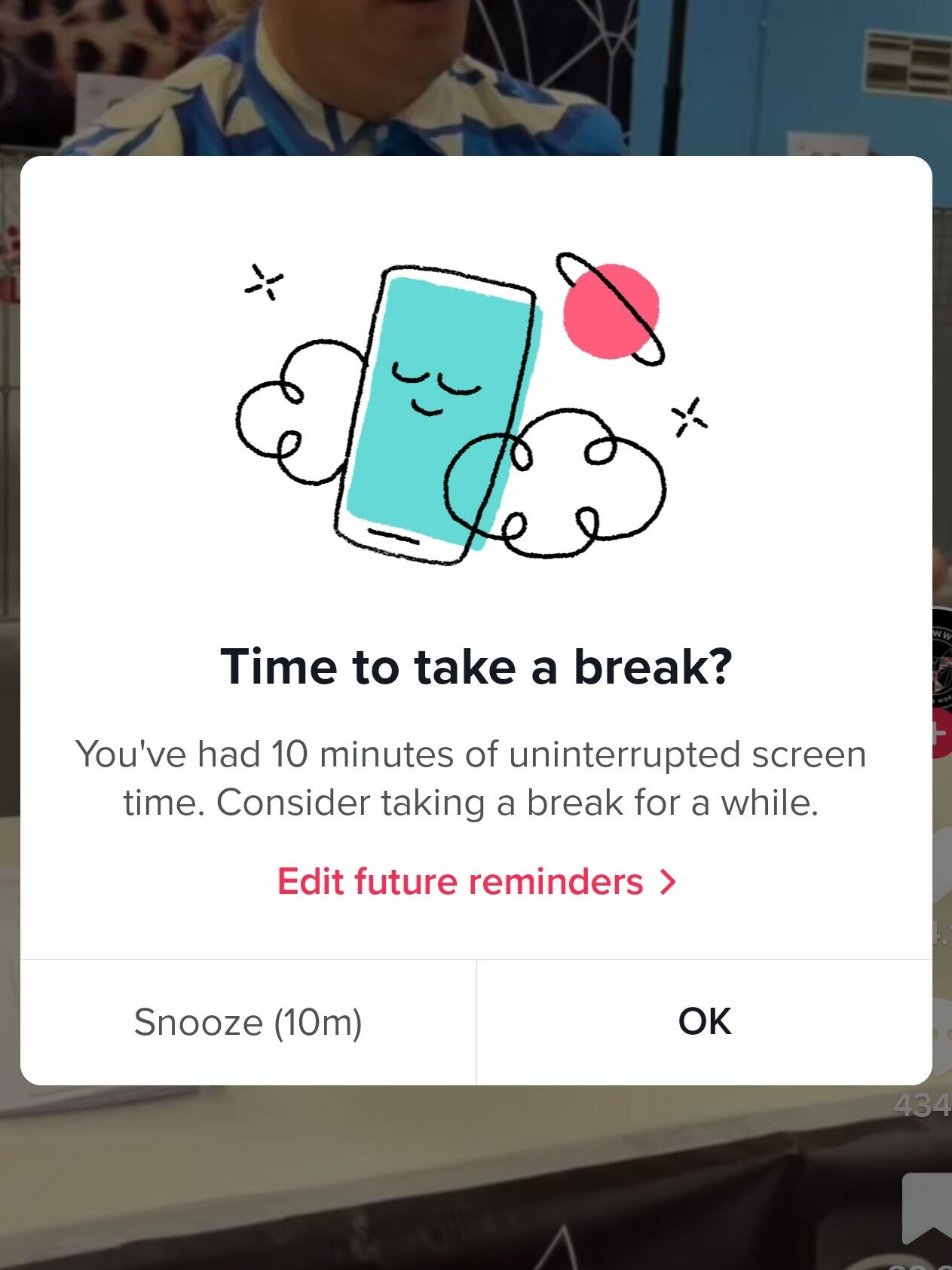You may have used TikTok’s digital well-being feature to limit screen time and reduce the amount of time you actually spend on TikTok.
Although TikTok offers the ability to be notified when you spend a considerable amount of time on the app and provide breaks in 10, 20 or 30-minute intervals there are some deceptive and likely intentional behaviours to keep you on the app.
When the app is set to restricted mode at the top of the app there is a message that reads “Restricted Mode” and although some viral videos were identified and restricted, others were not.
“Restricted Mode” videos also did not filter out swearing, fights in shopping centres and adult themes like sex and alcohol.
Time to take a break?
When the screen time limit is reached, a message appears like this,

Although the pop-up suggests you leave the app, it only partially obstructs the content and offers the option to “Snooze” or press OK.
You can tap anywhere on the screen and it will cause the pop-up to close and you can continue to use the app.
It would be better if the application obstructed the content better or only allowed the next video if the allotted time does not run out before the well-being timer elapses.
This behaviour provides a hook to keep users engaged for longer and encourages dismissing the message, rather than leaving the app.
Screen Time Management

Screen time management also offers no incentive to leave the app and the code has infinite retries with no timeout.

Androids native digital well-being application is more effective (though has its own issues) by disallowing the user to open the app when the timer is reached.
When a user reaches the timeout on the TikTok app, if they re-open the app without entering the passcode.
The user can see a glimpse of the content underneath, once again providing a hook and incentivising the user to unlock the app to view the content.
The pin code which uses a code set by the user does allow them to enter any number of codes to attempt to unlock the app, there is no restriction on the number of codes they can enter.
There is also the option to unlock the app using the recovery methods or wait two hours until the app can be used again.
TikTok Digital Wellbeing Effectiveness
Although a step in the right direction and following feedback from Internet Matters, they have still provided hooks and little incentive to leave the app.
Some of TikTok’s most addicted users will see the digital well-being features as an annoyance to circumnavigate and the app provides an easy way to bypass the digital well-being features.
Some of the app features also tease content and offer entertainment rather than invite users to leave the app.
“Nudging” 13 to 17-year-olds about their usage if they reach over 100 minutes a day in the app is also a high bar, over 1 hour 30 minutes a day is already an extended period.
Screen time management can be more effectively controlled at the device level. You can activate it by opening your settings app.